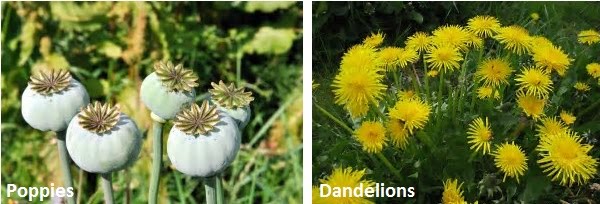Crops can be driven out by weeds which take up available resources and repopulate the crop land area. Pests interfere with optimal crop growth by feeding on them, damaging them or transmitting disease. Microorganisms including viruses, bacteria and fungi can be agents of disease and compromise crops.
Weeds compete with crop plants, and can be categorised into annual and perennial.
Annual weeds get a head start on other plants by growing earlier, and focus on creating seeds that can last for long periods of time in the soil, awaiting good sprouting conditions. They include annual nettles and the opium poppy, and are characterised by fast growth with a short life cycle, high seed output and long-term seed viability.

Perennial weeds such as dandelions and stinging nettles are more difficult to deal with because they are long-lived and can grow back using an efficient root nutrient store. Their storage organs enable their survival over winter, and unless their whole root system is removed, they are able to grow the full plant again through vegetative reproduction.